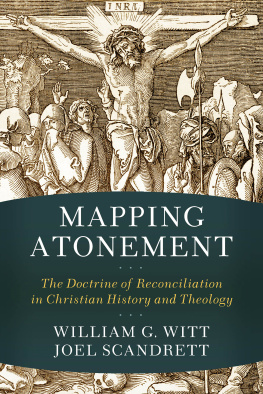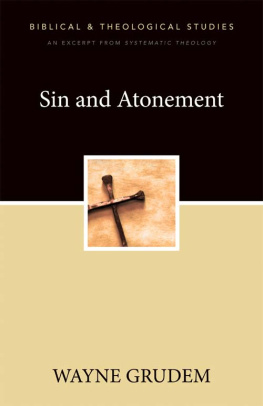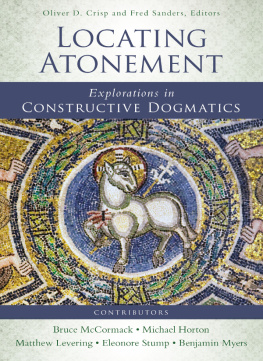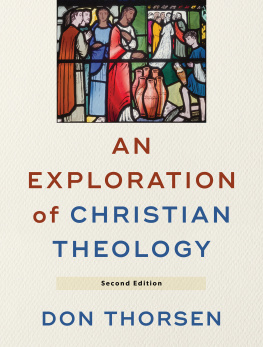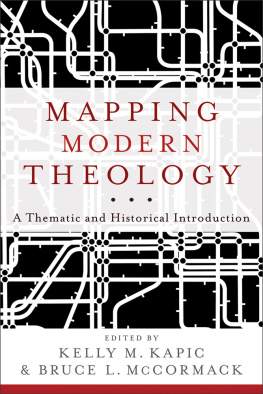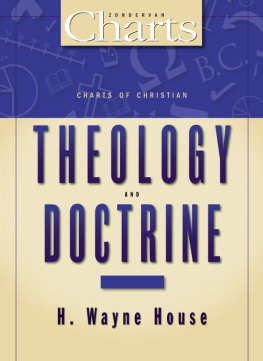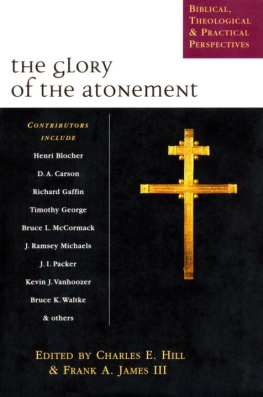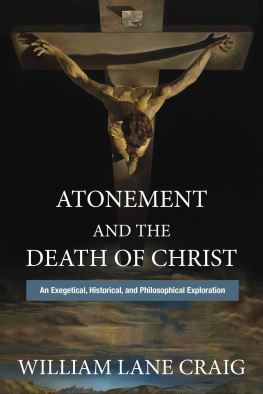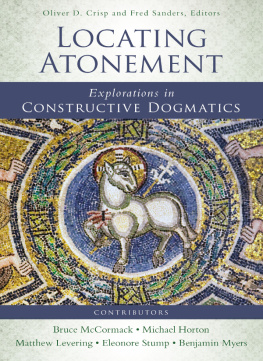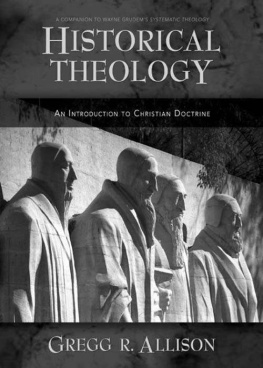Endosements
Christians are united in proclaiming that Jesus saves, but the Christian tradition and Scripture offer different narratives, symbols, and metaphors to understand what that means. Witt and Scandrett are wise, charitable, brilliant, and passionate guides to the scriptural, theological, and historical questions that compose atonement theology. This approachable introduction will help everyone who wants a deeper understanding of what we mean when we confess that Christ lived, died, rose again, and ascended into heaven for us and for our salvation.
Tish Harrison Warren , Anglican priest and author of Liturgy of the Ordinary and Prayer in the Night
Thoughtful Christians looking for guidance on the doctrine of the atonement are flooded with almost too much information. Witt and Scandretts Mapping Atonement brings wonderful clarity to the field. Their choice of figures for discussion is excellent, and their constructive approach to the topic is theologically balanced and insightful. I look forward to using this book in my own teaching.
Joseph Mangina , Wycliffe College, University of Toronto
Mapping Atonement is a major theological accomplishment. It offers a remarkably comprehensive overview of the history of atonement theology. With attention to detail and generosity of interpretation, Witt and Scandrett faithfully map the doctrine of atonement. Rightly arguing that Christs mission doesnt just illustrate but in fact constitutes atonement, Witt and Scandrett carefully chart their own theological path. This is the textbook on Christs salvific work that many have been waiting for.
Hans Boersma , Nashotah House Theological Seminary
Mapping Atonement serves admirably both as a contribution to theology and as an introduction for students. It expands the vista offered to earlier generations by Auln, even as it offers a grammar, rooted in Scripture and composed of history and ontology, to evaluate all proposals. Throughout, and especially in the conclusion (culminating in an critical realist account of T. F. Torrance), Witt and Scandrett understand the urgency of atonements retrieval in our confused time. I highly recommend it to a wide audience.
The Right Rev. George Sumner , Bishop of the Episcopal Diocese of Dallas
With the lucidity and penetration characteristic of their teaching and writing, Witt and Scandrett have provided us a superb survey of atonement theology. Written from a classical perspective that is respectful of the variety of views on the topic, yet responsibly critical in the application of scriptural and metaphysical demands on the material, the book covers a broad range of reflection on the atonement from the early church to the present, culminating in a careful commendation of T. F. Torrances work. The volume wears its scholarship lightly but is informed by a mastery of the tradition. This will prove an essential introduction to the topic.
Ephraim Radner , Wycliffe College, University of Toronto
Title Page
Copyright Page
2022 by William G. Witt and Joel Scandrett
Published by Baker Academic
a division of Baker Publishing Group
PO Box 6287, Grand Rapids, MI 49516-6287
www.bakeracademic.com
Ebook edition created 2022
All rights reserved. No part of this publication may be reproduced, stored in a retrieval system, or transmitted in any form or by any meansfor example, electronic, photocopy, recordingwithout the prior written permission of the publisher. The only exception is brief quotations in printed reviews.
Library of Congress Cataloging-in-Publication Data is on file at the Library of Congress, Washington, DC.
ISBN 978-1-4934-3691-0
Unless otherwise indicated, Scripture quotations are from the New Revised Standard Version of the Bible, copyright 1989 National Council of the Churches of Christ in the United States of America. Used by permission. All rights reserved.
Karl Barth. 1956. The Doctrine of Reconciliation . Vol. IV/1 of Church Dogmatics . Edited by T. F. Torrance and Geoffrey W. Bromiley. Translated by Geoffrey W. Bromiley. Edinburgh: T&T Clark, an imprint of Bloomsbury Publishing Plc.
Baker Publishing Group publications use paper produced from sustainable forestry practices and post-consumer waste whenever possible.
Dedication
To our students, past and present, at Trinity School for Ministry:
may you be faithful ministers of Gods reconciliation of all things in Jesus Christ
Contents
Endorsements
Title Page
Copyright Page
Dedication
Acknowledgments
Abbreviations
Introduction: What Is Atonement?
1. Atonement as Incarnation: Irenaeus and Athanasius
2. Atonement as Christus Victor: Church Fathers and Gustaf Auln
3. Atonement as Satisfaction: Anselm of Canterbury
4. Atonement as Divine Love: Peter Abelard and the Wesleys
5. Atonement as Fittingness: Thomas Aquinas
6. Atonement as Penal Substitution: John Calvin and Charles Hodge
7. Atonement as Moral Example: Hastings Rashdall
8. Atonement as Reconciliation: Karl Barth
9. Atonement Today
Bibliography
Author Index
Back Cover
Acknowledgments
T his book is the result of our shared conviction of the need for such a book. Having both taught courses in atonement theologyBill at Trinity School for Ministry and Joel (previously) at Trinity Evangelical Divinity Schoolwe were surprised to discover no single book that offered a comprehensive survey and analysis of atonement paradigms and their representative theologians throughout the epochs of the Christian tradition. While many comparative texts of atonement paradigms exist, only a few are comprehensive, and most champion a particular paradigm at the expense of others. Moreover, few if any of these texts offer a theological method by which to evaluate the relative strengths and weaknesses of historic paradigms that is not already committed to a particular paradigm. We believe this book is distinctive in that it (1) considers the major atonement paradigms and their respective theologians from the ancient church to the present, and (2) employs an integrated, multilevel set of theological criteria by which to evaluate them. This means of assessment was developed by Bill in a previously published essay.
At the same time, we remain indebted to the scholarship of others in the field of atonement theology. Several works stand out in particular. We found the T&T Clark Companion to Atonement , edited by Adam Johnson, to be an excellent resource. Peter Schmiechens Saving Power: Theories of Atonement and Forms of the Church served as a model for us, though our book diverges from that work in vital respects. And though it is both dated and flawed in its argument, the impact of Gustaf Aulns Christus Victor upon the study of the doctrine of atonement can clearly be seen in these pages.
We are grateful to Trinity School for Ministry for the generous provision of sabbaticals for the completion of this project, and to our colleagues, with whom it is a true joy to labor. We express our appreciation to Trinity student Elizabeth Ames for creating the author index. We are grateful to our spouses, Jennie Johnstone and Karen Scandrett, for their love and support. We are grateful to our students, who continually press us to refine and sharpen our thinking. And we are especially grateful to Bob Hosack at Baker Academic, who patiently waited and occasionally prodded as we sought to bring the book to completion through many delays.
William Witt
Joel Scandrett
Ambridge, Pennsylvania
September 2021
. Witt, He Was Crucified under Pontius Pilate.

